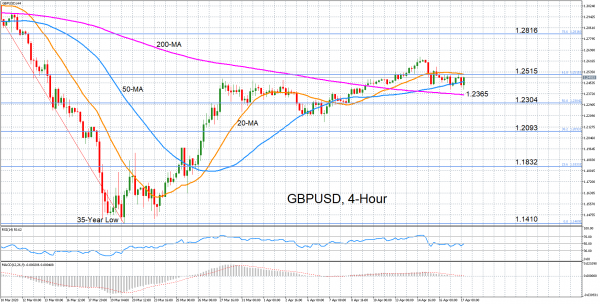GBPUSD is struggling to recapture positive momentum after its rebound from the 35-year low of 1.1410 ran out of energy when it crossed above the 61.8% Fibonacci retracement of the March down move in the 4-hour timeframe.
The RSI is hovering just below the 50-neutral level, while the MACD is barely holding in positive territory and is in the process of slipping below its red signal line. Both indicators suggest the latest consolidation phase is set to continue in the near term.
Should the bulls attempt to push GBPUSD higher again, they’re likely to meet immediate resistance at the 20-period moving average (MA), which is converging with the 61.8% Fibonacci at 1.2515. A break higher would open the way for the 78.6% Fibonacci at 1.2816 and solidify the bullish structure in the short-to-medium term.
But with price action currently being confined by both the 20- and 50-period MAs, upward moves may fail, inviting the bears to test the 200-MA at 1.2365. Should they succeed, the 1.23 handle would be next to come under threat.
If the 1.23 level is breached, it would also take prices below the 50% Fibonacci at 1.2304, shifting the focus back to the downside and increasing the risk of sharper declines. The bears would then set their sights on the 38.2% Fibonacci of 1.2093, raising the prospect of a fresh drive below the critical 1.20 level.



 Signal2forex.com - Best Forex robots and signals
Signal2forex.com - Best Forex robots and signals




